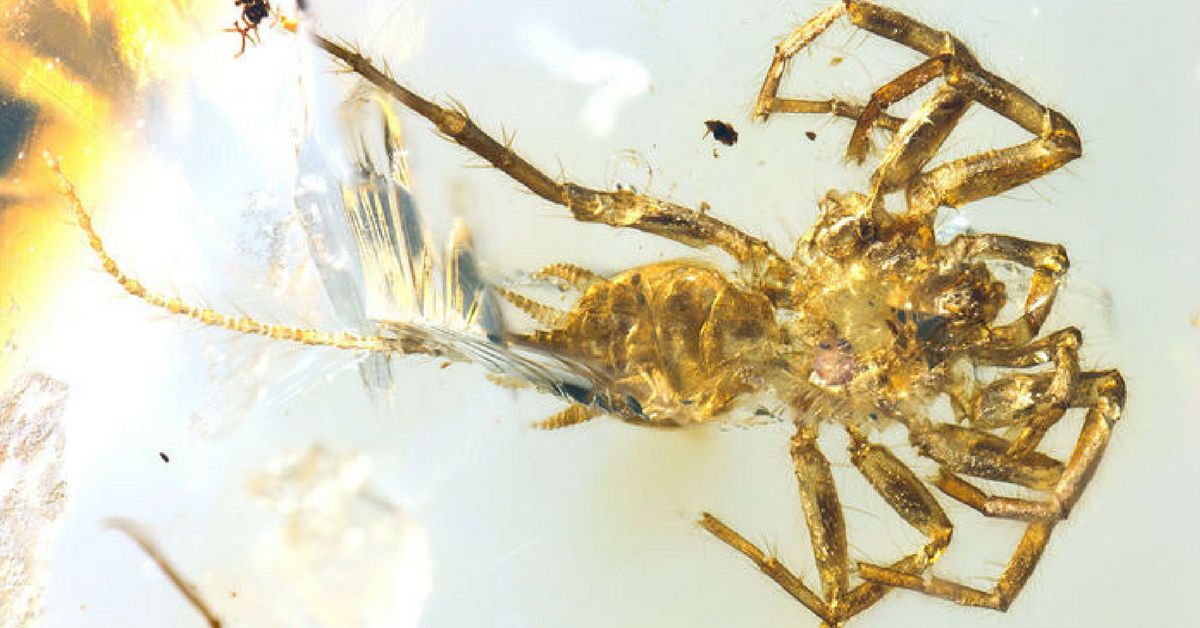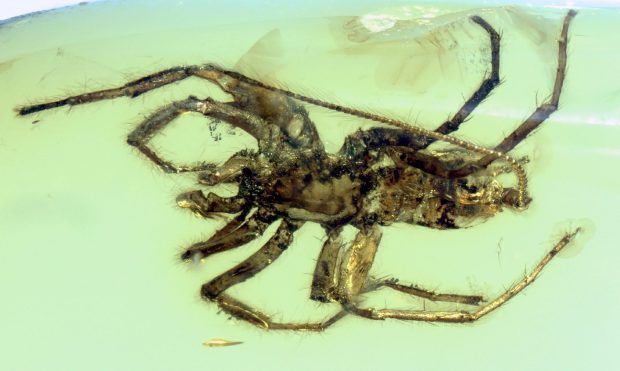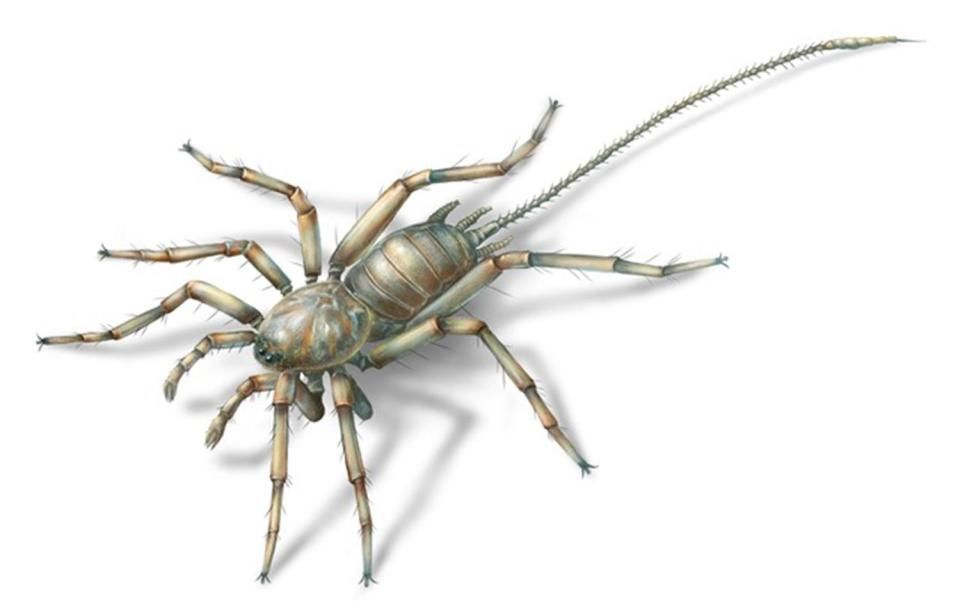Researchers from the University of Kansas have discovered a 100 million-year-old fossil of a spider with a scorpion-like tail.
The primitive spider was discovered in a piece of amber, and is believed to have lived during the same time period as the dinosaurs in the rainforests of Myanmar.
"There's been a lot of amber being produced from northern Myanmar and its interest stepped up about ten years ago when it was discovered this amber was mid-Cretaceous; therefore, all the insects found in it were much older than first thought," the University of Kansas's Paleontology Professor Paul Selden told The Sun.
"Amber is fossilized resin, so for a spider to have become trapped, it may well have lived under bark or in the moss at the foot of a tree," he added.
According to the Metro, the newfound species has been named Chimerarachne after Chimera, a monster from Greek mythology who was composed of the body parts of multiple creatures.
A scorpion's tail, which is called a telson, has never been known to be attached to a spider. The 3 mm tail is actually longer than the length of its body, which only stood at 2.5 mm.
Along with a tail, the arachnid is also believed to have sharp fangs - similar to those of modern-day spiders - but could inject its venom into insects trapped in their pincer-like claws.
As four fossils discovered were well preserved, scientists were able to identify the male Chimerarachne's unique sex organs.
Called pedipalps, the sex organ was similar to a tiny hypodermic needle, which was used to transfer its sperm into its partners.
"Any sort of flagelliform appendage tends to be like an antenna. It's for sensing the environment. Animals that have a long whippy tail tend to have it for sensory purposes," Selden said.
While today's spiders uses its spinnerets to build their webs, Selden doesn't think the Chimerarachne did that as well.
"Spinnerets are used to produce silk but for a whole host of reasons "“ to wrap eggs, to make burrows, to make sleeping hammocks or just to leave behind trails," Selden explained.
"If they live in burrows and leave, they leave a trail so they can find their way back. These all evolved before spiders made it up into the air and made insect traps," he added.
Selden also suggests that this new species could still be alive today, as there's a chance they have yet to be found.
"We know a lot about the Burmese biota during the Cretaceous."
"It was a pretty good tropical rainforest, and there are a great many other arachnids we know were there, particularly spiders, that are very similar to the ones you find today in the southeast Asian rainforest," Selden said.
"It makes us wonder if these may still be alive today. We haven't found them, but some of these forests aren't that well-studied, and it's only a tiny creature," he concluded.
Are you intrigued by the newly discovered fossils?


